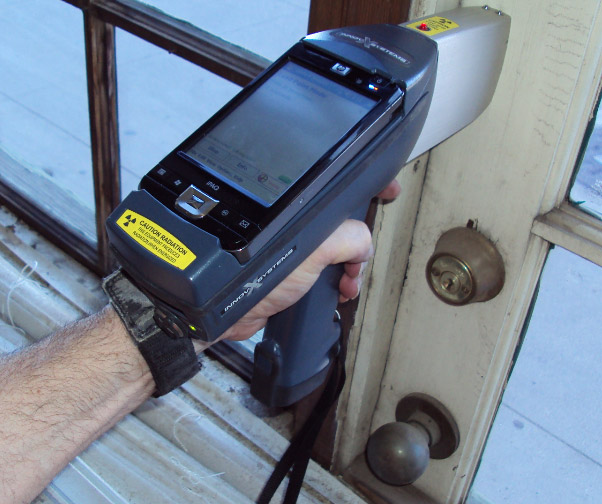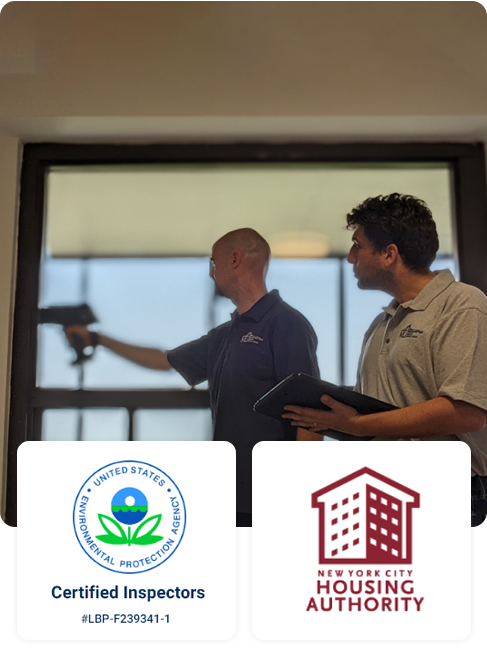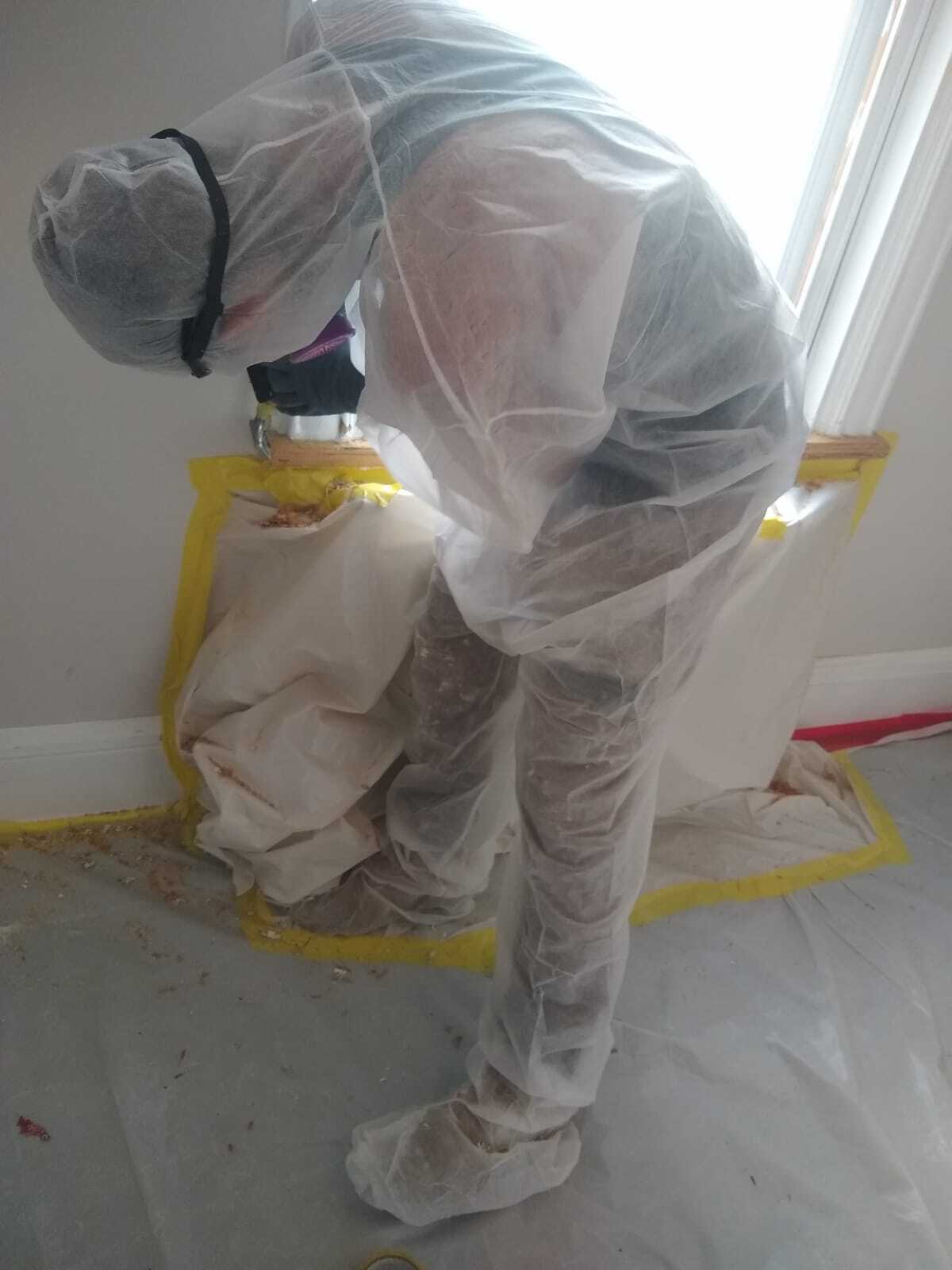DOH & HPD Lead Violation Removal NYC-- Professional Providers for Compliance
DOH & HPD Lead Violation Removal NYC-- Professional Providers for Compliance
Blog Article
Step-by-Step Process for Successful Lead Offense Removal
Following this, adherence to government and state laws is vital to developing an efficient removal plan. The real remediation calls for competent workers to execute these plans while purely adhering to safety procedures. What happens after the remediation is finished?

Detection and Assessment
Detection and analysis are vital action in the remediation of lead infractions. To make sure a reliable remediation process, it is important to carry out an extensive examination of the setting where possible lead direct exposure exists. The first phase of discovery involves recognizing resources of lead contamination, which can be discovered in paint, water pipelines, dirt, and dust. Making use of advanced analysis devices such as X-ray fluorescence (XRF) analyzers and atomic absorption spectroscopy (AAS) can provide accurate measurements of lead focus.
This includes assessing the extent and severity of contamination, as well as identifying populaces at danger, especially children and pregnant females. The collected data should be diligently documented to support the growth of an efficient remediation strategy.
In addition, it is crucial to focus on areas with the highest degree of contamination and those that position the greatest wellness threats. Efficient communication with stakeholders, including property proprietors, locals, and public health officials, is essential for making certain that all events are notified concerning the findings and the succeeding steps required for removal. This preliminary discovery and assessment stage prepares for an effective lead infraction removal process.

Legal and Regulative Conformity
Browsing the landscape of legal and regulative conformity is a critical element of successful lead offense remediation. Compliance makes sure not only the security of damaged populaces but additionally the integrity and lawful standing of the organization accountable for removal.
State and neighborhood laws can vary, frequently imposing added responsibilities or even more rigorous criteria. An extensive understanding of all appropriate legal frameworks is essential. This includes careful paperwork of all remediation activities to show conformity. Failing to comply with these guidelines can lead to serious charges, consisting of large fines, legal action, and reputational damages.
Engaging lawful professionals focused on ecological regulation can promote browsing these complexities. Normal training and accreditation for all workers associated with the removal process are additionally required to make certain adherence to security and regulatory standards. By prioritizing legal and regulative compliance, companies can efficiently minimize dangers and achieve an effective remediation end result.
Planning the Removal
Efficiently intending the remediation of lead violations starts with a comprehensive analysis of the infected site. This initial analysis must consist of a thorough site examination to determine the extent and concentration of lead contamination. Comprehensive tasting and laboratory analysis are paramount to produce an accurate contamination profile. This data-driven method ensures that remediation initiatives are appropriately targeted and effective.
Once the contamination is mapped, a danger evaluation must be carried out to examine possible health and wellness dangers to humans and the environment. Lead Violation Removal in NYC. This evaluation needs to consider elements such as exposure pathways, population vulnerability, and environmental influences. The understandings collected will certainly create the basis for picking an appropriate removal approach
Ultimately, establishing clear, achievable objectives for the removal task is essential. These objectives ought to align with regulative requirements and stakeholder assumptions to make certain conformity and area approval. Establishing a thorough removal strategy that lays out techniques, timelines, and source allowance will help with an organized approach to the cleaning procedure.
In addition, it is crucial to involve with stakeholders early and preserve transparent communication throughout the planning phase. This includes educating local neighborhoods, acquiring required authorizations, and coordinating with regulative companies to make sure all legal and procedural needs are satisfied. A well-crafted removal plan not only resolves the contamination efficiently yet also constructs trust and teamwork among all events included.
Executing the Removal
With a well-structured remediation plan in position, the focus moves to the actual execution of the removal tasks. This phase includes setting in motion the necessary sources, including skilled employees, specific tools, and top quality materials. Begin by plainly delineating functions and duties to ensure liability and smooth coordination among employee.
The first step in execution is to protect the site. This consists of establishing up containment locations to avoid lead dirt and particles from spreading, as well as employing air filtration systems to check my source preserve air high quality. Next, wage the removal of lead-based products. Use approaches such as wet scraping, chemical removing, or encapsulation, depending upon the seriousness and place of the contamination. It is crucial to adhere to news safety procedures, consisting of using individual protective devices (PPE) and correct disposal of hazardous materials.
Throughout the remediation process, conduct routine evaluations and air high quality monitoring to guarantee compliance with regulatory standards. Reliable communication with stakeholders, including homeowner and occupants, is essential to maintain them informed of development and any kind of unanticipated advancements. By diligently complying with these steps, the remediation tasks can be performed efficiently and effectively, ultimately mitigating lead threats.
Post-Remediation Techniques
Post-remediation methods play a critical function in ensuring the long-lasting success of lead infraction remediation initiatives. These strategies encompass ongoing surveillance, upkeep, and neighborhood education and learning to stop future lead exposure and guarantee a safe atmosphere.
First, regular surveillance is vital. This entails routine screening of the previously affected locations to guarantee that lead degrees remain within secure restrictions. Homeowner ought to establish a schedule for these tests, ideally in collaboration with certified environmental professionals.

Third, informing the area plays an essential duty in sustaining the benefits of remediation. Homeowners and home managers must be informed about the threats of lead direct exposure and the most effective techniques for maintaining try this a lead-safe atmosphere. Workshops, informative pamphlets, and area conferences can be reliable tools for distributing this info.
Conclusion
Successful lead infraction removal needs an extensive, systematic approach encompassing detection and evaluation of contamination, adherence to lawful and governing requirements, thorough planning, and effective implementation of remediation initiatives. This methodical process highlights the importance of thoroughness and caution in dealing with and reducing lead contamination.
Report this page